ABOUT THE AUTHOR
Jeff Smoot is a climber, hiker, author, and lawyer based in Seattle, Washington. He is the author of five other FalconGuides, including Backpacking Washingtons Alpine Lakes Wilderness, Hiking Washingtons Alpine Lakes Wilderness, Adventure Guide to Mount Rainier, Climbing the Cascade Volcanoes, and Climbing Washingtons Mountains.


An imprint of The Rowman & Littlefield Publishing Group, Inc.
4501 Forbes Blvd., Ste. 200
Lanham, MD 20706
www.rowman.com
Falcon and FalconGuides are registered trademarks and Make Adventure Your Story is a trademark of The Rowman & Littlefield Publishing Group, Inc.
Distributed by NATIONAL BOOK NETWORK
Copyright 2019 Jeff Smoot
Photos by Jeff Smoot unless otherwise noted.
Maps by The Rowman & Littlefield Publishing Group, Inc.
All rights reserved. No part of this book may be reproduced in any form or by any electronic or mechanical means, including information storage and retrieval systems, without written permission from the publisher, except by a reviewer who may quote passages in a review.
British Library Cataloguing in Publication Information available
Library of Congress Cataloging-in-Publication Data available
ISBN 978-1-4930-3941-8 (paperback)
ISBN 978-1-4930-3942-5 (e-book)
 The paper used in this publication meets the minimum requirements of American National Standard for Information SciencesPermanence of Paper for Printed Library Materials, ANSI/NISO Z39.48-1992.
The paper used in this publication meets the minimum requirements of American National Standard for Information SciencesPermanence of Paper for Printed Library Materials, ANSI/NISO Z39.48-1992.
Printed in the United States of America
The author and The Rowman & Littlefield Publishing Group, Inc., assume no liability for accidents happening to, or injuries sustained by, readers who engage in the activities described in this book.
WARNING:
Climbing is a sport where you may be seriously injured or die. Read this before you use this book.
This guidebook is a compilation of unverified information gathered from many different climbers. The author cannot assure the accuracy of any of the information in this book, including the topos and route descriptions, the difficulty ratings, and the protection ratings. These may be incorrect or misleading, as ratings of climbing difficulty and danger are always subjective and depend on the physical characteristics (for example, height), experience, technical ability, confidence, and physical fitness of the climber who supplied the rating. Additionally, climbers who achieve first ascents sometimes underrate the difficulty or danger of the climbing route. Therefore, be warned that you must exercise your own judgment on where a> climbing route goes, its difficulty, and your ability to safely protect yourself from the risks of rock climbing. Examples of some of these risks are: falling due to technical difficulty or due to natural hazards such as holds breaking, falling rock, climbing equipment dropped by other climbers, hazards of weather and lightning, your own equipment failure, and failure or absence of fixed protection.
You should not depend on any information gleaned from this book for your personal safety; your safety depends on your own good judgment, based on experience and a realistic assessment of your climbing ability. If you have any doubt as to your ability to safely climb a route described in this book, do not attempt it.
The following are some ways to make your use of this book safer:
1. Consultation: You should consult with other climbers about the difficulty and danger of a particular route prior to attempting it. Most local climbers are glad to give advice on routes in their area; we suggest that you contact locals to confirm ratings and safety of particular routes and to obtain first-hand information about a route chosen from this book.
2. Instruction: Most climbing areas have local climbing instructors and guides available. We recommend that you engage an instructor or guide to learn safety techniques and to become familiar with the routes and hazards of the areas described in this book. Even after you are proficient in climbing safely, occasional use of a guide is a safe way to raise your climbing standard and learn advanced techniques.
3. Fixed Protection: Some of the routes in this book may use bolts and pitons that are fixed in place in the rock. Because of variances in the manner of placement, weathering, metal fatigue, the quality of the metal used, and many other factors, these fixed protection pieces should always be considered suspect and should be backed up when possible by equipment that you place yourself. Never depend on a single piece of fixed protection for your safety, because you never can tell whether it will hold weight. In some cases, fixed protection may have been removed or is now missing. However, climbers should not add new pieces of fixed protection unless existing protection is faulty. Existing fixed protection can be tested by an experienced climber and its strength determined. Climbers should never add bolts or drilled pitons to an existing route. They should climb the route as equipped by the first ascent party or choose a route more within their abilitya route to which they do not have to add additional fixed anchors.
Be aware of the following specific potential hazards that could arise in using this book:
1. Incorrect Descriptions of Routes: If you climb a route and you have a doubt as to where it goes, you should not continue unless you are sure that you can go that way safely. Route descriptions and topos in this book could be inaccurate or misleading.
2. Incorrect Difficulty Rating: A route might be more difficult than the rating indicates. Do not be lulled into a false sense of security by the difficulty rating.
3. Incorrect Protection Rating: If you climb a route and you are unable to arrange adequate protection from the risk of falling through the use of fixed pitons or bolts and by placing your own protection devices, do not assume that there is adequate protection available higher just because the route protection rating indicates the route does not have an X or an R rating. Every route is potentially an X (a fall may be deadly), due to the inherent hazards of climbingincluding, for example, failure or absence of fixed protection, your own equipments failure, faulty protection placement, or improper use of climbing equipment.
4. Failure to Warn of a Particular Hazard: Although an effort has been made to warn of known hazards on particular routes, this guide does not warn of every hazard that exists on every route. Climb carefully and be watchful for potential hazards.
There are no warranties, whether expressed or implied, that this guidebook is accurate or that the information contained in it is reliable. There are no warranties of fitness for a particular purpose or that this guide is merchantable. Your use of this book indicates your assumption of the risk that it may contain errors and is an acknowledgment of your own sole responsibility for your climbing safety.
PREFACE
The variety of rock climbing opportunities in Washington is impressive, to say the least. The Index Town Walls are reminiscent of Yosemites finest cliffs, only better, with a preponderance of thin, vertical crack routes and unlikely face and friction climbs. Leavenworth offers nearly every kind of climbing imaginable, from steep granite face and friction routes to sandstone slabs, and all manner of cracks, thin and wide, long and short, steep and overhanging. Darrington has knobby slabs galore, plus some long free routes and a few big walltype aid climbs. Static Point has many long, runout friction routes on smooth granite slabs, reminiscent of Yosemites Glacier Point Apron. Mount Erie offers a variety of easy, accessible face and crack climbs, while Little Si and Exit 38 offer sport climbing close to the urban and suburban sprawl of Puget Sound. Vantage and Tieton River Canyon have hundreds of crack and face routes on basalt and andesite rimrock. Washington Pass offers alpine rock at its finest, while nearby Mazama has a dozens of sport climbs, short and long, and promise of dozens more. The Spokane areas feature a variety of face and crack routes and some newly developed sport crags. New crags are being discovered and developed every year. There is something for everyone on Washington rock. Enjoy it all!



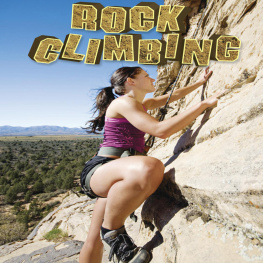
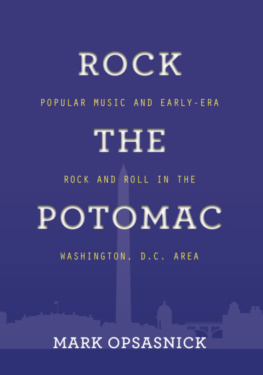
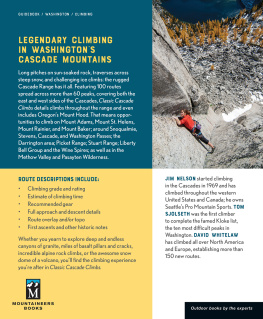
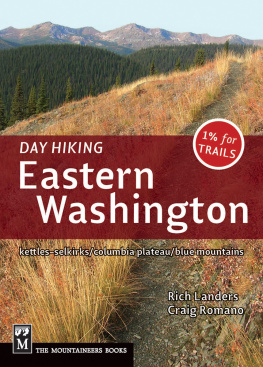
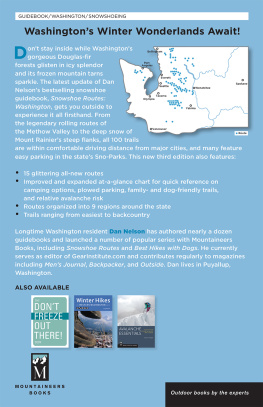
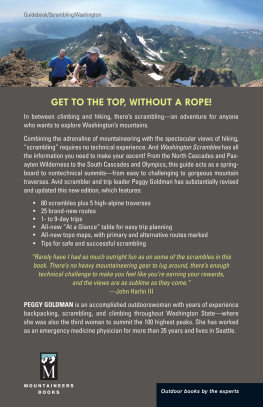


 The paper used in this publication meets the minimum requirements of American National Standard for Information SciencesPermanence of Paper for Printed Library Materials, ANSI/NISO Z39.48-1992.
The paper used in this publication meets the minimum requirements of American National Standard for Information SciencesPermanence of Paper for Printed Library Materials, ANSI/NISO Z39.48-1992.